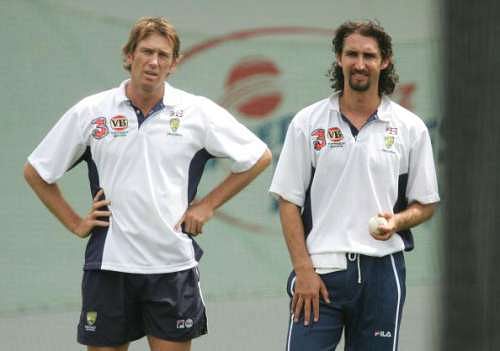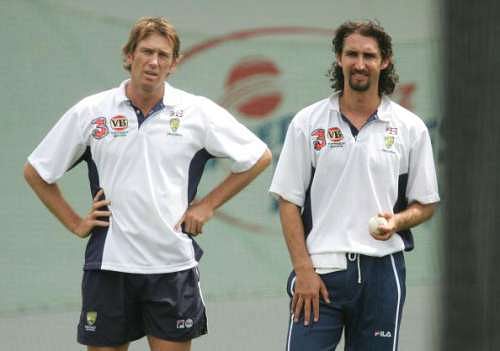
"The lessons we learnt were really important": Jason Gillespie on 2001 India-Australia series

Former Australia pacer Jason Gillespie believes that his team’s 2001 tour of India and the lessons they learnt during it played a crucial role in their success when they returned to the country in 2004. Jason Gillespie opened up about what exactly they did differently during an exclusive chat with Sportskeeda’s Indranil Basu.
“The lessons we learned from that series, and then going into that series in 2004 as a fast bowling group were really important,” Jason Gillespie said.
"We bowled outside the off-stump, while Indians were good on the leg-side": Jason Gillespie
Speaking about what the team did in 2001, Jason Gillespie says that they tried to play away from the strengths of the Indian batsmen. While the likes of VVS Laxman, Rahul Dravid and Sachin Tendulkar all love to play on the leg side, they would bowl outside off-stump and hope to get an edge to a fielder behind the stumps.
For that to work, Jason Gillespie recognises that the pitch being used would have to a certain way with the right amount of bounce and carry, the kind that surfaces in India rarely provide.
“In 2001, we bowled a lot outside off, Indian batsmen are good through the leg side, very wristy players. If you bowl straight they could manipulate the ball anywhere on the leg side into edges,” Jason Gillespie said.
“We tried to stay away from that in 2001 and encouraged all the Indian batsmen to play on the offside and that could cause opportunities behind the wicket for edges to the keeper or the slips. But the surface had to be right, bounce and carry had to be there to allow that to happen,” Jason Gillespie added.
"We decided to change the whole philosophy in 2004": Jason Gillespie
The Australians changed that approach in 2004, however. They chose to bowl straighter, and attack the stumps more. While this played to the strengths of the Indian batsmen, Jason Gillespie also revealed how keeping more fielders on the leg-side also helped starve the Indian batsmen of the boundaries that they loved to hit.
“In 2004, we decided to change the whole philosophy. We decided to really attack the stumps but in part, they played to the Indian batsmen’s strengths where they can work the ball through the legside,” Jason Gillespie said.
“We thought what we can do is set an extra couple of fielders on the leg side, in catching positions, and we can have a defensive position out on the square leg boundary, we can attack the stumps and if the batters hit the ball and get it through the field, they will get 1-2 runs and they won’t get the boundary. Indian batsmen love to hit boundaries so we thought we will starve them of that boundary and keep attacking the stumps,” Jason Gillespie added.
Jason Gillespie also said that the bowlers knew they would have to back their fitness and bowl long spells if they were to succeed.
“The theory was that we would back our fitness, bowl long spells and attack the stumps and if Indian batsmen miss we would hit their pads or we hit their stumps. And we had a bit of success with that. We worked really hard at being disciplined, and it worked a bit, it was good lessons we learned from 2001 to 2004,” the Sussex head coach added.
In the end, the change in strategy was a success for Jason Gillespie and the Australian team, as they turned a 2-1 defeat in 2001 to a 2-1 victory in 2004. The Aussies claimed the series with wins in Bengaluru and Nagpur before a defeat in the final Test in Mumbai saw the Indians get some consolation.